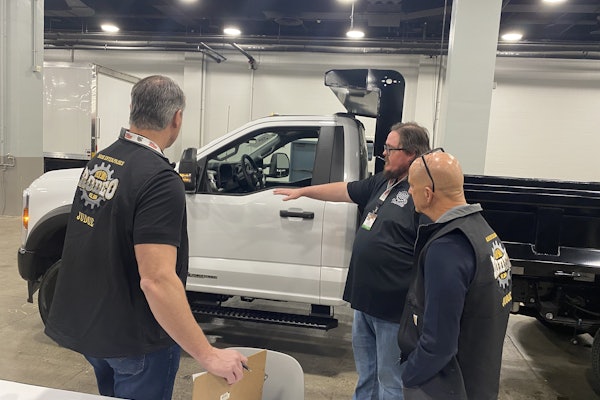Lower-emissions heavy-duty engines have made advancements in some areas since respective rollouts in 2002 and 2004, but there is still room for improvement, according to a panel of fleet representatives who presented their assessments of the latest engine technologies at TMC.
The consensus among the TMC panelists was that drivers favor the drivability of the engines because of the power curve. “Drivers have reported they noticed considerable acceleration improvements,” said Dan Umphress, managing director of maintenance solutions for FedEx.
“Drivers enjoy the responsiveness of the engines,” said Tom Newby, director of field maintenance for Old Dominion Freight Line.
While fuel mileage suffered with the first-generation engines, the gap between newer engines and pre-2002 power plants is shrinking, Umphress said. “The MPG is back within 3 percent of pre-02/04 engines,” he said.
Steve Duley, Schneider National vice president of purchasing, put his fleet’s miles-per-gallon numbers at about 5 percent more than pre-lower-emissions engines, and overall costs at 6 to 8 cents more per mile to operate.
Part of the cost is a 2 percent mileage decrease because of regeneration, according to Duley. Other problems include more downtime – mainly due to aftermarket system problems in the early 2007 engines.
All the panelists agreed the first year of a new platform launch normally has been where many issues arise. The maintenance costs of exhaust gas recirculation engines were high in the first year, but OEMs have done well at finding problems and fixing them, the panelists agreed.
In addition to overall OEM price increases, another aspect of the 2007 engines has been additional education of drivers because of the need for more manual regeneration than expected, the panel noted; technician training also has had to increase.
The panelists reported service intervals for oil changes have been consistent, but fuel filter change intervals have had to be revamped, Duley said.
Unknowns of the 2007 engines included the life of diesel particulate filters and aftermarket components such as turbochargers.
The new engines have “created unique opportunities for fleets and engine manufacturers to reopen personalized links to address problems,” Newby said.







